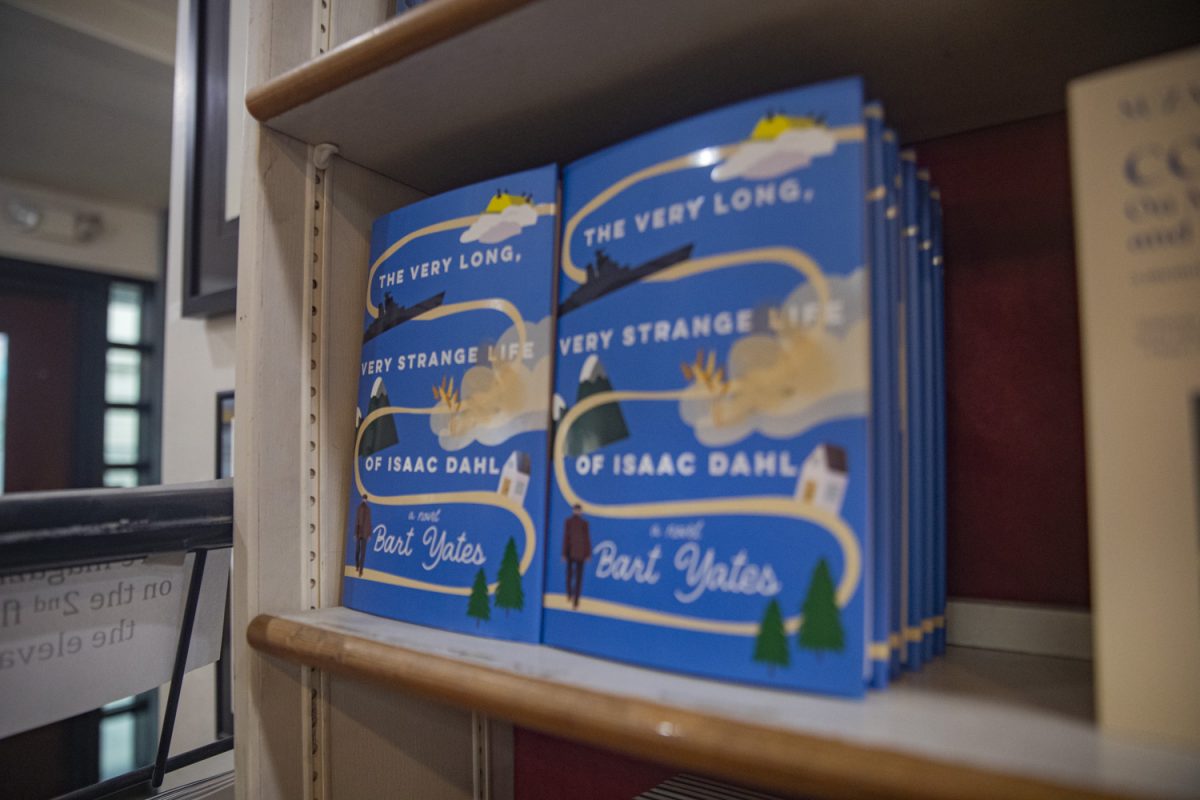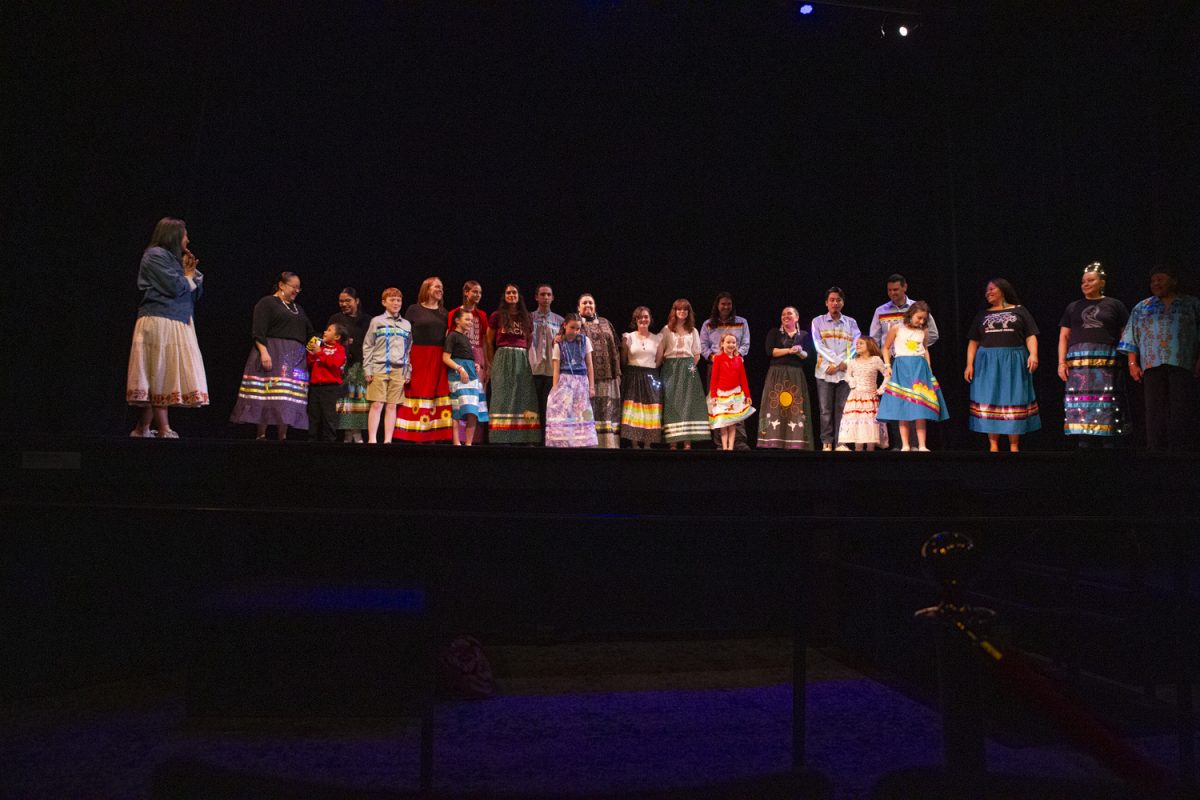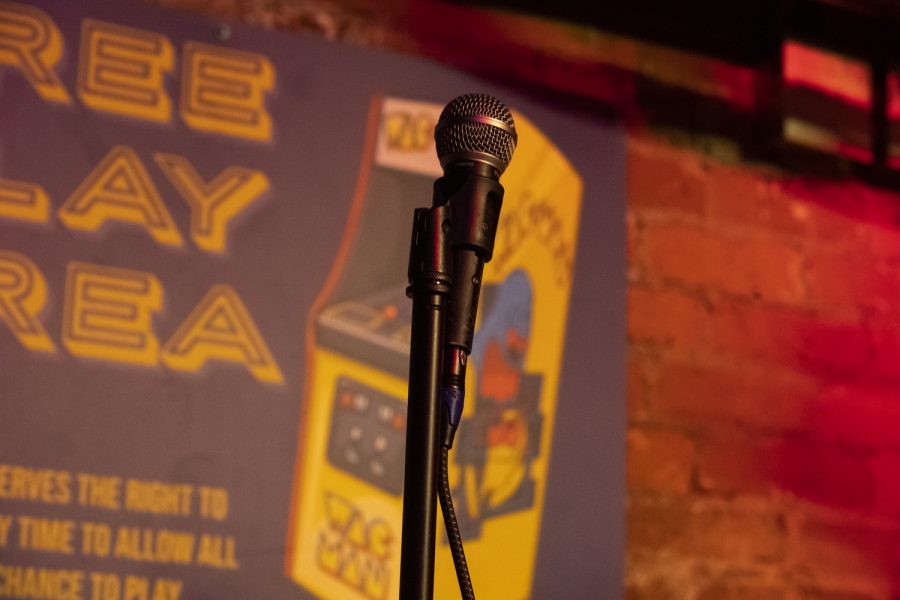A stunning array of insects catch the light behind a glass pane where they hover on pegs above yellowed tags. The sheen of their fibrous wings and the careful posing of their articulated limbs make them appear almost alive.
As many as 50,000 insects make up the University of Iowa’s newest collection, filling over 500 drawers. The UI Pentacrest Museum of Natural History acquired the collection from Iowa Wesleyan University, which closed in May after 181 years of operation.
According to its website, the Museum of Natural History is already home to roughly 46,000 insect specimens, including four specimen types, from the UI’s own entomology expeditions. This acquisition doubles the UI’s bug collection.
The Wesleyan collection is around 100 years old, with many specimens originally captured in the 1920s. Researchers used several methods to capture insects in their natural environments, study them, and preserve them behind glass. Research was conducted as a result of the Iowa Insect Survey, which accounted for all of the insects in Iowa counties.
Cindy Opitz, UI director of research collections at the Natural History Museum, said collections like these are important because the studies of the specimens reveal information about the climate and quality of their environments. They offer what Opitz calls “snapshots through the decades” of the environment.
The researchers’ handwritten data on the tags of each insect can be transferred to a technological database for further interpretation by researchers.
Interpreting the data from the insects will be valuable to certain groups of people, such as those at the state hydrogenics labs who study water quality in the state, Opitz said, noting that insects are among the many indicators of waterway health.
The UI is conducting trials to test how long it will take to process the data of each insect. After they are processed, the insects will be moved out of their acidic containers to new containers that are not saturated with pesticides, Opitz said.
There is only so much space that the Museum of Natural History can fill with external collections, but the museum will save as many collections as possible because the wealth of knowledge is too rich to lose, Opitz said.
RELATED: UI’s Laysan Island Cyclorama is in need of repairs after 100 years of operation
The UI reached out to Wesleyan about its collections after in March the institution announced its closure.
Jessica Smith, communications coordinator at the Natural History Museum, described the process as “preserving priceless history” in an email to The Daily Iowan.
“Answers to some of today’s most important questions about our past and future, our climate, and our survival rest safely in these collections, patiently awaiting the right researcher to ask,” Smith wrote.
After acquiring the insect collection, the museum’s next step is to apply for funding from the National Science Foundation to process and store the entire collection. Opitz anticipates the museum will need a three or four-year grant to fund the full process.
If the museum receives the grant, it will be able to provide its collections with proper storage in rolling cabinets and drawers, as well as provide students in the museum program with paid internships.
“We’re excited about the idea of getting funding, not just to rehouse these specimens, but also to give paid internships to people who are either in the museum studies program or studying biology or other related areas who could benefit from hands-on experience like this,” Opitz said.
Proper climate-controlled storage for the collections is essential because collections can deteriorate over time if they become damp or damaged, Opitz said. Large rolling cabinets and drawers for storage will also optimize the limited space the museum has in certain rooms.
The storage would not only house insects but also other invertebrate collections that the museum
currently does not have room for. A lack of space has forced the museum to store specimens in areas of the museum that are not climate-controlled, which can be harmful to preservation, Opitz said.
Reid Durbin, a UI alum who earned her certificate in museum studies and now works in the offices of the
Museum of Natural History with Opitz, said the collections will serve as a great learning opportunity for students and a way to observe the world around us.
“It’s super interesting to be able to look back and go, ‘Oh I have these [insects] in my backyard now and this guy caught this in 1904,” Durbin said. “I think that’s super fun.”












